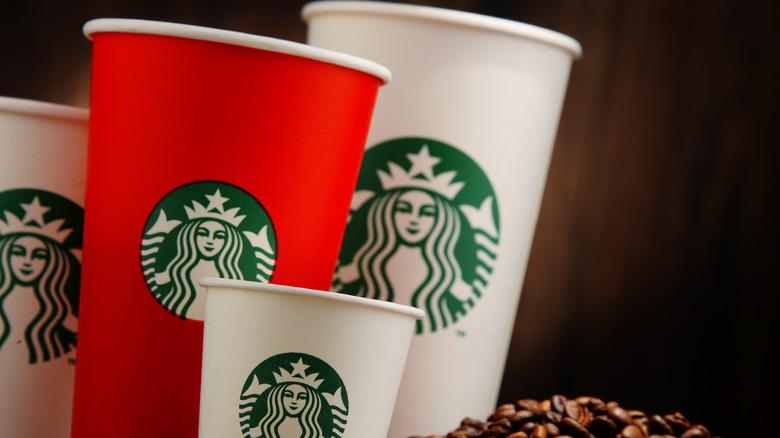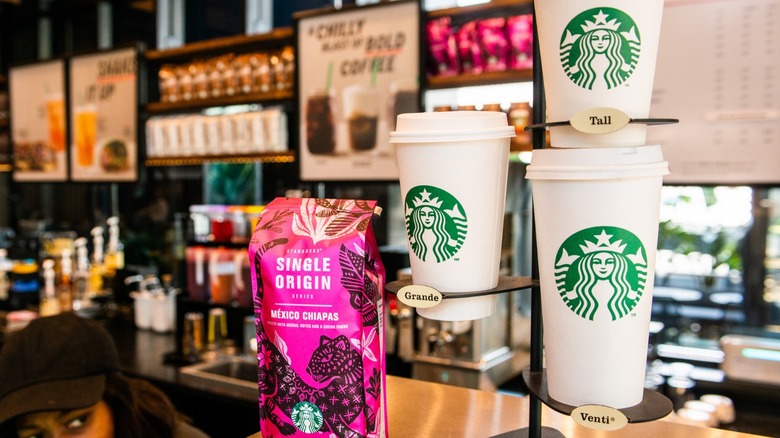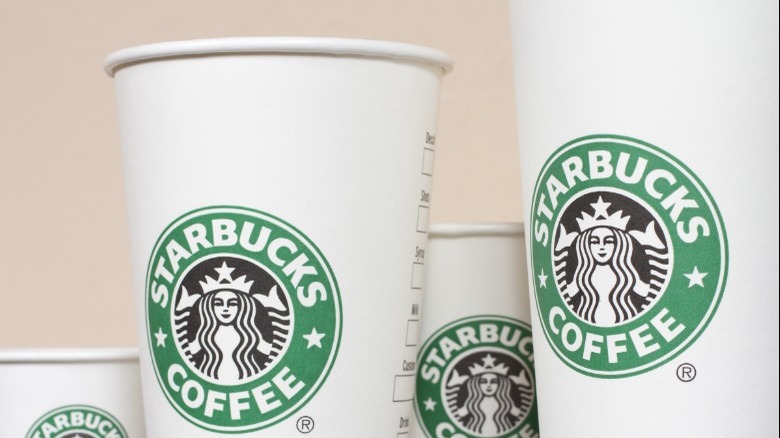The Reason Starbucks Doesn't Call Its Coffee Sizes Small, Medium, Or Large
Unlike its competitors, Starbucks doesn't categorize its drinks into the typical small, medium, and large sizes. Instead, the company uses a more distinctive labeling system, and you might get a peculiar look if you don't use it — or, at least, the barista may repeat your order back to you with the "proper" name. That being said, the names can be confusing if you've never visited one of its coffee shops.
It might seem like Starbucks invented these size names to differentiate itself, but they're actually rooted in the company's history. Howard Schultz, the former director of retail operations and marketing at Starbucks, visited Italy in 1983 and was inspired by the setup of the country's coffee shops. Schultz modeled his first storefront, called Il Giornale, after Italian conventions, offering three sizes: short, tall, and grande. In this system, the short size was eight ounces, with sizes increasing from there — which is why the size labeled "tall" is now the standard small. After Schultz's Il Giornale acquired Starbucks in 1987, today's Starbucks menus have expanded to include sizes up to 30 ounces — the trenta.
What do the sizes actually mean?
Now that you know where the Starbucks sizes originated, what do the names actually mean? The chain offers six beverage sizes: demi, short, tall, grande, venti, and trenta. Each of these corresponds to a different liquid measurement for whatever drink you order. The demi is three ounces; a short is still eight ounces; a tall is 12 ounces; a grande is 16 ounces; a venti is 20 ounces (24 for cold drinks), and a trenta is 30 ounces.
The names for the sizes that came after the original three (short, tall, grande) are the actual Italian words for the numbers that correspond to their measurements — after all, how else do you indicate larger than large (grande)? Venti translates to 20, and trenta translates to 30. Additionally, you may have noticed that not all of these sizes appear on the Starbucks menu board in its stores. Only short, tall, grande, and venti are displayed, but you can order a trenta for certain iced drinks — or a demi (also known as a quad) for shots of espresso.
The sizing can be quirky and has caused controversy
There are many quirks that emerge when you delve deeper into Starbucks' size offerings. The eight-ounce short cup is available only as a hot drink option. At one point, the chain served mini Frappuccinos, but those were actually 10 ounces and are no longer available. As you may have noticed, a cold venti drink is 24 ounces, while a hot one is only 20. The size difference is apparently to accommodate the ice in cold drinks. In a cold venti drink, you'll receive three shots of espresso, but its hot counterpart comes with two unless you specifically request a third. As for the largest size, the only Starbucks drinks you can't order in a trenta cup are hot drinks, specialty lattes, and Frappuccinos — everything else is fair game.
In the past, customers have criticized the chain for adding too much ice to its drinks, leaving less room for the actual beverage. Some social media users have posted videos of themselves pouring the liquid from smaller drinks without ice into larger size cups filled with ice to demonstrate the disparity. Starbucks was even sued for not serving the advertised amount of liquid in its iced beverages back in 2016. Ultimately, that lawsuit was dismissed, which might explain why savvy patrons have taken to devising hacks to avoid overpaying for ice at Starbucks on their own.



